Monday, February 3, we will meet online.
New to sangha?
This Monday we are offering an optional Newcomers Orientation.
Learn more and sign up here
Dear friends,
This week, we will meet Monday evening, Feb 3rd, from 7-8:30PM EST online; Wednesday morning, Feb 5th, from 7-8AM EST in person at our meditation space (3812 Northampton Street NW); and Friday, Feb 7th, 12-1PM EST online.
On Monday night Magda will facilitate. Magda shares:
Over the next two Monday nights, Magda will guide us in exploring how we can embrace, examine, heal, and transform our suffering through the Four Noble Truths. This Monday, she will lead us through the first two Noble Truths.
“When you first hear that suffering is a Noble Truth, you might wonder what’s so noble about suffering?” (Thich Nhat Hanh, No Mud, No Lotus 15).
1) The Reality of Suffering (Dukkha): Recognizing the “Monster” of Fragmentation
“Breathing in, I know suffering is there. Breathing out, I say hello to my suffering” (No Mud, No Lotus 23).
During times of information overload like the recent election, I often feel weighed down by distractions. Brother Phap An, in a recent class at the European Institute of Applied Buddhism (EIAB), described this experience as being “sucked in by the monster of social media and societal chaos.” When I allow this “monster” to consume me, I feel fragmented and disconnected from my deeper self, as though my body and mind have become disjointed. These distractions intensify my suffering, keeping me trapped in ignorance and disconnected from the mindful practices that restore and maintain wholeness.Brother Phap An depicted this fragmentation as a set of disconnected points residing inside us. This image resonated deeply with me, particularly during the election. Distractions often make it harder for us to confront our suffering, allowing it to accumulate and to transform into fear, despair, judgment, or hate.
In accordance with the First Noble Truth, the Reality of Suffering, which encourages us to recognize and meditate on suffering, I identify this fragmented state as a form of suffering and embrace it in my practice. When suffering rears its head, I pause, follow my breath, and hold my suffering as if cradling mud or a crying baby in my arms, directing gentle energy towards it. Rather than fighting or suppressing my emotions, I approach them with tenderness, like a mother comforting her child.This practice allows me to begin integrating the fragmented parts of myself. Compassion flows more freely, paving the way for healing and leading me toward liberation.
2) The Causes of Suffering (Samudaya): Looking Deeply into My Mud
"If we can get in touch with our body, then we can also get in touch with our feelings. There are many feelings calling to us. Every feeling is like our child. Suffering is a hurt child crying out to us. But we ignore the voice of the child within” (No Mud, No Lotus 24).
After recognizing the suffering within me, I make it the object of my meditation. I examine its root causes and the forces that fragment my wholeness and disconnect me from the present moment. Recently, these forces have mostly been external distractions, especially social media, and the emotional reactions they elicit. At other times, they have taken the form of unresolved emotions, misaligned views, unrealistic expectations, lack of acceptance, and inherited suffering. I reflect on how these negative seeds have been cultivated. Perhaps I have neglected to revisit the Five Mindfulness Trainings, sought unwholesome nourishment, or nurtured harmful habits. This practice helps me develop understanding and temper my judgment toward those whose actions impact me.
Once I’ve embraced the suffering—figuratively holding it as mud in my hands—I work to release it through mindful breathing. I do my best to replace negative seeds with positive ones, offering kindness in the face of unkindness and understanding in the face of ignorance. Through this process, I’ve become less attached to my emotions and judgments, experiencing a growing sense of liberation. For example, when a family member exhibits judgmental behavior, I practice understanding their struggles instead of reacting with judgment of my own.
Most mornings, I practice holding the “mud” of accumulated emotions—suffering of both recent and ancestral or karmic origin. With my hands resting on my lower abdomen, I connect my body and mind in the present moment. When I neglect this practice, emotions like sadness, fear, and anger tend to build and spiral. Fear, in particular, is constantly replenished in today’s media environment. By holding and transforming the mud of fear, I nurture the lotus within me.
Thay Embraces the Mud
“I have looked the beast straight in the eye, and seen it for what it is. I am like someone just recovered from a near-fatal illness who has stared death in the face” (Fragrant Palm Leaves 93)
In Fragrant Palm Leaves, Thay gives us a deeply moving account of despair, and of the power of mindfulness and friendship to lead us out of it. He recounts spending several days at Columbia University in silence, consumed by suffering but drawing solace and strength from the presence of a friend. ”I felt the unbearable pain of a woman who is about to give birth to a child she already knows will be sentenced to death” (90), he writes. Yet, he learned that the darkest moments of despair contain the potential for awakening and growth.
Questions to Explore
1) What practices help me feel more connected to my most genuine self and my truest aspirations?
2) What practices help me recognize my suffering and the suffering of those around me?
3) What practices help me explore “the mud” of my suffering and its root causes?
4) What practices help me feel hope, compassion, and liberation during especially challenging and fragmenting times?

